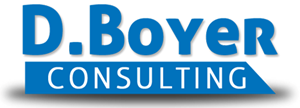Business is mostly conducted via email or phone communications.
Office hours 10:00 a.m. to 6:00 p.m, Mon. - Thurs., and 10:00 a.m. to 2:00 p.m. on Fridays.
SEND EMAIL INQUIRIES DIRECTLY TO:
Dawn.Boyer@me.com
Business is mostly conducted via email or phone communications.
Office hours 10:00 a.m. to 6:00 p.m, Mon. - Thurs., and 10:00 a.m. to 2:00 p.m. on Fridays.
SEND EMAIL INQUIRIES DIRECTLY TO:
Dawn.Boyer@me.com
Business is mostly conducted via email or phone communications.
Office hours 10:00 a.m. to 6:00 p.m, Mon. - Thurs., and 10:00 a.m. to 2:00 p.m. on Fridays.
SEND EMAIL INQUIRIES DIRECTLY TO:
Dawn.Boyer@me.com
Writing the dreaded cover letter
October 16th, 2024 by Dawn Boyer
While the requirements of supplying cover letters are waning in the digital world of employment tasking for most hiring companies, about 5%-8% of potential employers may still ask for this communication. The recruiter wants an example of the job seeker’s ability to write a succinct and persuasive letter that grabs the recruiter’s attention before they read the resume. The Automatic Tracking System (ATS) may not enable the upload of a cover sheet in the application process.
I’m amazed how grownups cower in fear of writing this simple communication or have no clue where to start. Simply remember the rule of threes for an easy way to create the letter. You want three (3) paragraphs, with at least three (3) sentences each, and you need to provide at least three (3) pieces of vital information in each paragraph. The cover letter should run more than one page. For the best results, ensure the sentences do not start with “I” to avoid looking self-centered. The three main paragraphs can be broken down easily into further components.
The first paragraph lets the recipient know why you are targeting that employer, why they should be interested in your skills and experiences, and/or who you might know in the company. The first sentence demonstrates what job requisition … “I am applying for the job published on (where you found it) for (job title, with ID # if provided).
The second point is you are demonstrating what type of research you have performed on the company to familiarize yourself with what they do, sell, or manufacture, and what standing they have in the industry … “Your three-time, award-winning widget attracted my attention because my class studied the mechanics and robotic technology of your widget in college, which was considered cutting edge at that time.”
The third point may relate to your experience and background … “Your website notes you have obtained recent government contracts (if you know the ID#, plug them in here) for the Department of Defense. This contract does call for some entry-level widget building positions, for which I am qualified.”
You can note the name of a current employee who referred you to the position “Ms. Jamie Smith (job title, office location) noted she would follow up with you (hiring manager or human resources POC) to ensure you received and reviewed my resume.” (Some companies provide employee referral bonuses, so finding a Point of Contact on LinkedIn might offer an advantage if they can refer your resume to earn a hiring bonus. Check the company website for benefits and look for employee referral bonuses on the bulleted listing.)
The second paragraph should illustrate some transferable skill or experience that has not been fully illustrated in the actual resume or education that may not be directly related but has provided training that could transfer into the job field. If you can write three explanatory sentences in an interesting manner, those points could be what gets your resume in front of a hiring manager. “I earned a Scout Badge for Robotics in high school and participated in a nationwide robotics contest for building widgets, for which my team earned third place in college. Later, I used those skills as a volunteer worker to build a functional widget for (name a tool), which was used in a (situation), enabling (for example) disabled soldiers in the Wounded Warrior program to more quickly acclimate to their prosthetics. While my background and experience do not show much work experience directly related to building widgets, my volunteer experience, skills, and education support my capability to understand and learn quickly within the field.”
The third paragraph should also provide three vital points – 1) point of contact information (cell phone and email address), 2) dates and times of availability (example: 8:00 a.m. to 8:00 p.m., Monday through Friday or 9:00 a.m. – 9:00 p.m., weekends), and 3) noting a willingness to be present for a telephonic interview or a face-to-face interview at the hiring manager’s schedule and convenience.
And, of course, your signature should be short and sweet – “Respectfully, Your Name.” You can scan your signature and paste the scanned graphic into the letter if you send it digitally, but it’s not required.
Using the three principles of the cover letter, these guidelines should easily provide the recruiter or hiring manager sufficient information and intrigue to pick up the phone or enter your email address on their keyboard for further consideration of your skill sets.
Dawn D. Boyer, Ph.D., manages and operates a consulting firm, D. Boyer Consulting, in Norfolk, Virginia Beach, Richmond, Colonial Beach (Dahlgren), and Gloucester, VA. Her background is 25+ years in the Human Resources field, of which 12+ years are within the Federal & Defense Contracting industry. She is the author of 1,030+ books and textbooks on business, human resources research, career search practice, women’s studies, genealogy lineages, and adult coloring books. Her books are listed on Amazon.com under her author’s page for Dawn D. Boyer, Ph.D. Reach her at Dawn.Boyer@me.com or visit her website at www.dboyerconsulting.com.
Readers Comments
Writing the dreaded cover letter
October 16th, 2024 by Dawn Boyer
While the requirements of supplying cover letters are waning in the digital world of employment tasking for most hiring companies, about 5%-8% of potential employers may still ask for this communication. The recruiter wants an example of the job seeker’s ability to write a succinct and persuasive letter that grabs the recruiter’s attention before they read the resume. The Automatic Tracking System (ATS) may not enable the upload of a cover sheet in the application process.
I’m amazed how grownups cower in fear of writing this simple communication or have no clue where to start. Simply remember the rule of threes for an easy way to create the letter. You want three (3) paragraphs, with at least three (3) sentences each, and you need to provide at least three (3) pieces of vital information in each paragraph. The cover letter should run more than one page. For the best results, ensure the sentences do not start with “I” to avoid looking self-centered. The three main paragraphs can be broken down easily into further components.
The first paragraph lets the recipient know why you are targeting that employer, why they should be interested in your skills and experiences, and/or who you might know in the company. The first sentence demonstrates what job requisition … “I am applying for the job published on (where you found it) for (job title, with ID # if provided).
The second point is you are demonstrating what type of research you have performed on the company to familiarize yourself with what they do, sell, or manufacture, and what standing they have in the industry … “Your three-time, award-winning widget attracted my attention because my class studied the mechanics and robotic technology of your widget in college, which was considered cutting edge at that time.”
The third point may relate to your experience and background … “Your website notes you have obtained recent government contracts (if you know the ID#, plug them in here) for the Department of Defense. This contract does call for some entry-level widget building positions, for which I am qualified.”
You can note the name of a current employee who referred you to the position “Ms. Jamie Smith (job title, office location) noted she would follow up with you (hiring manager or human resources POC) to ensure you received and reviewed my resume.” (Some companies provide employee referral bonuses, so finding a Point of Contact on LinkedIn might offer an advantage if they can refer your resume to earn a hiring bonus. Check the company website for benefits and look for employee referral bonuses on the bulleted listing.)
The second paragraph should illustrate some transferable skill or experience that has not been fully illustrated in the actual resume or education that may not be directly related but has provided training that could transfer into the job field. If you can write three explanatory sentences in an interesting manner, those points could be what gets your resume in front of a hiring manager. “I earned a Scout Badge for Robotics in high school and participated in a nationwide robotics contest for building widgets, for which my team earned third place in college. Later, I used those skills as a volunteer worker to build a functional widget for (name a tool), which was used in a (situation), enabling (for example) disabled soldiers in the Wounded Warrior program to more quickly acclimate to their prosthetics. While my background and experience do not show much work experience directly related to building widgets, my volunteer experience, skills, and education support my capability to understand and learn quickly within the field.”
The third paragraph should also provide three vital points – 1) point of contact information (cell phone and email address), 2) dates and times of availability (example: 8:00 a.m. to 8:00 p.m., Monday through Friday or 9:00 a.m. – 9:00 p.m., weekends), and 3) noting a willingness to be present for a telephonic interview or a face-to-face interview at the hiring manager’s schedule and convenience.
And, of course, your signature should be short and sweet – “Respectfully, Your Name.” You can scan your signature and paste the scanned graphic into the letter if you send it digitally, but it’s not required.
Using the three principles of the cover letter, these guidelines should easily provide the recruiter or hiring manager sufficient information and intrigue to pick up the phone or enter your email address on their keyboard for further consideration of your skill sets.
Dawn D. Boyer, Ph.D., manages and operates a consulting firm, D. Boyer Consulting, in Norfolk, Virginia Beach, Richmond, Colonial Beach (Dahlgren), and Gloucester, VA. Her background is 25+ years in the Human Resources field, of which 12+ years are within the Federal & Defense Contracting industry. She is the author of 1,030+ books and textbooks on business, human resources research, career search practice, women’s studies, genealogy lineages, and adult coloring books. Her books are listed on Amazon.com under her author’s page for Dawn D. Boyer, Ph.D. Reach her at Dawn.Boyer@me.com or visit her website at www.dboyerconsulting.com.














